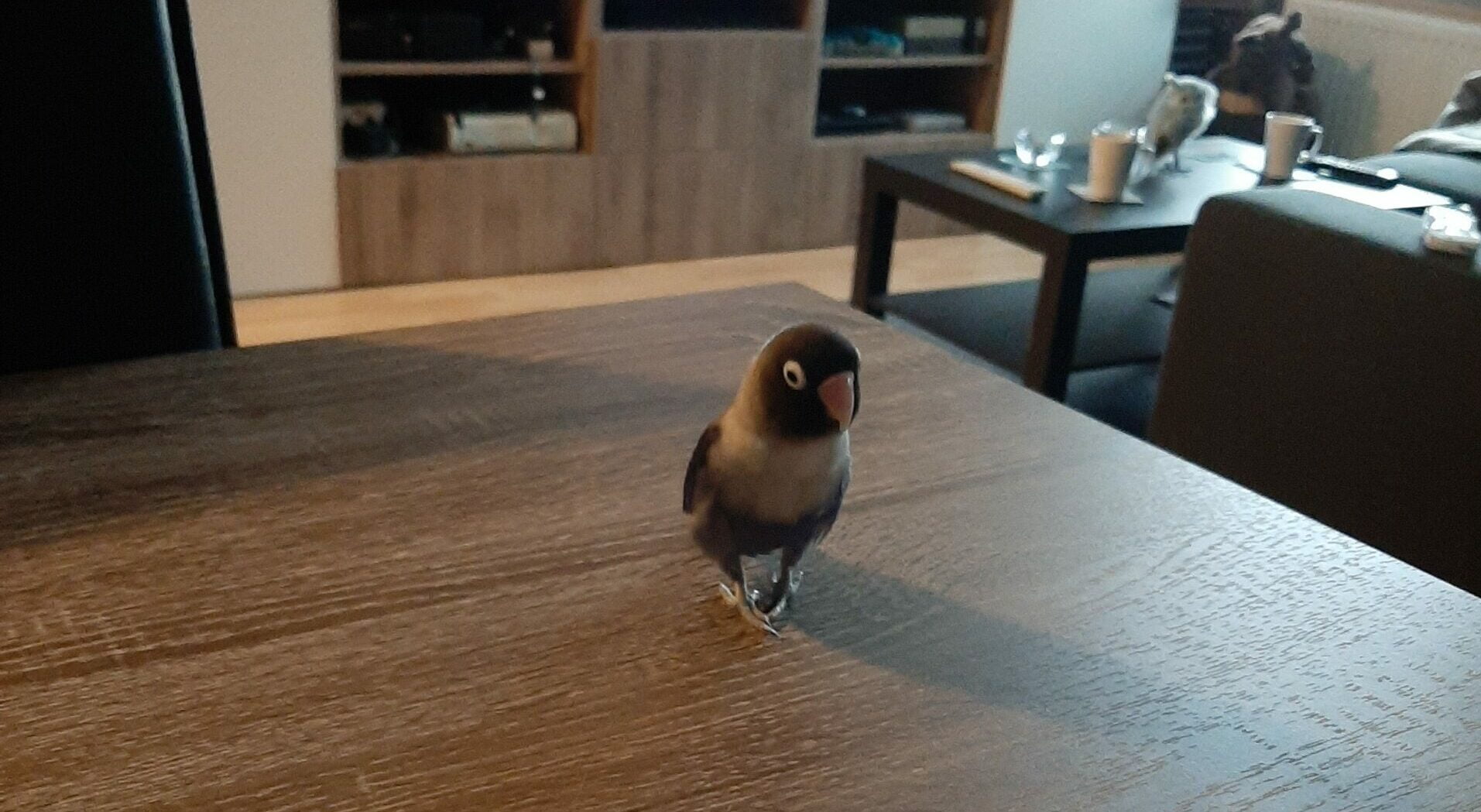Can a lovebird be housed with parakeets/budgies?
Lovebirds and parakeets are similar yet different birds. They are both a small species that make a lot of noise. This makes people think they can put them together.
It is advised to not leave a lovebird and parakeet together unsupervised. Despite their name, lovebirds tend to be territorial and aggressive towards other bird species. If you leave these two species together unsupervised, it may result in missing toes, feet, or even fatal casualties.
So, keep your lovebird and parakeets in separate cages, and supervise playtime to avoid injuries.
Can a lovebird and parakeet/budgie share a cage?
You should not put a lovebird in the same cage as a budgie or other parakeet species. These two bird species do not speak the same language, and it can cause serious problems.
Lovebirds have developed their own code of language, behaviors, and rituals. They are taught to the baby birds from the day the hatch from their eggs. A parakeet, not knowing this language, will have no idea what the lovebird is saying. When your lovebird is trying to engage in some sort of ritual your parakeet doesn’t understand, your parakeet will not respond the right way according to the lovebird.
Parakeets, especially budgies, have no means to defend themselves against a lovebird’s attack. Aside from being smaller, their beaks are weaker and less sharp. Even bigger parakeets like cockatiels will be in danger when caged together with a lovebird. Lovebirds will defend their territory and bite any other bird species in the cage.
If you have a lovebird and a parakeet. Keep them in separate cages that have enough distance from each other so that they cannot touch each other through the bars.
What if they are both very young?
There are cases of bird owners having their lovebird and parakeet bond with each other. Though possible, it doesn’t happen often.
This mostly happens when these birds are together from an incredibly young age. It allows the parakeet to learn the language, behaviors and rituals of a lovebird. This however is no guarantee, there also plenty of cases where the birds will never get along.
So while you could give this a try, it is not recommended.
Is the size of the cage an influence?
No, it is not. The cage of your bird is their territory. Like your bedroom being yours and you don’t want to share it with siblings/cousins but are okay with sharing it with your significant other. For lovebirds this is the same. They do not want to share their space with other bird species. They are however fine with sharing it with other lovebirds, as other lovebirds understand them.
Even if the cage is big, as in an aviary in the backyard or a big bird room, lovebirds will claim it as their territory.
Can a lovebird and parakeet/budgie be in the same room?
When your birds are in their cages, they can be in the same room. Do make sure that you keep enough distance between the two cages so they cannot touch each other. It might be a bit noisy though… then again lovebirds are noisy anyway.

When out of their cage, lovebirds and parakeets can play together peacefully. This is because everything outside their personal cages is neutral territory. You should still supervise your birds, just in case. This way you can intervene in case the lovebird attacks your parakeet.
If your parakeet is out of its cage, make sure it doesn’t come near the lovebird’s cage. A lovebird will protect its territory violently. Its instinct is to bite the toes of the invader, which may result in a missing toe or foot for your parakeet.





